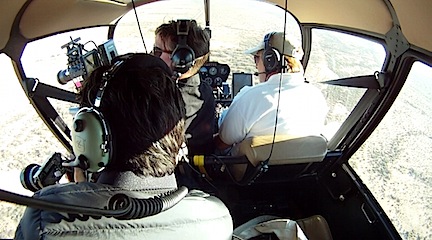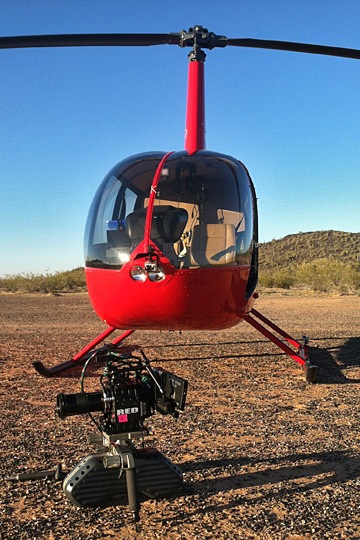Your questions, answered.
Yesterday, I did a golf ball drop. I have another one scheduled for today. And I’ve done at least three of them in the past. (You can read a blog post that details one of them and see a video of another drop embedded in this post.) Here’s a shot from my helicopter’s skidcam to give you a better idea of what it looks like:

The Tweets
Last night, when I tweeted:
Today’s golf ball drop had 2100 balls. Just learned that tomorrow’s will have 4900. Can you even IMAGINE that many golf balls? Not me.
I got two replies:
mjburian
I don’t understand (but I’m intrigued). You’re dropping them from altitude? Where? Individually?
Daniel_Loxton
Wait, what? Why would someone drop golf balls (or any solid object) out of a helicopter? http://www.youtube.com/watch?v=ST01bZJPuE0
(The link is to a pertinent WKRP in Cincinnati video clip; watch it if you haven’t seen it before.)
So I figured I’d explain what this is about.
Golf Ball Drop Explained
A golf ball drop is usually a charity or fund-raising event. The fundraisers “sell” numbered golf balls for a set price. The balls are taken up in a helicopter and dropped from 200-300 feet onto a target which is normally a standard sized golf hole or cup. Often, a ring of lines is drawn around the target on the grass to mark different levels of prizes. The ball(s) that go in the cup or are within the rings or are even just closest to the center of the target win the prize(s). The money left over after paying for the helicopter, the balls, and the prizes makes up the proceeds from the fund-raising event.
Normally, this is a big spectator event. After all, who doesn’t like helicopters? Who wouldn’t want to watch something being dropped out of one? It’s a fun way to raise money.
Safety Issues
As a safety-conscious pilot, I do everything in my power to make the flight as safe as possible. The dropper sits behind me, strapped in with his door off. All the other helicopter doors are on to limit the possibility of loose items flying out another door.
The balls are usually stored in bags or boxes on the seat beside the dropper. He drops them out the open door — which is on the side opposite of the helicopter’s tail rotor. The balls generally go straight down, but some do bounce off the skid. I’ve never had one bounce dangerously, but I do leave my door on in to prevent one from bouncing back into the cockpit and getting under my pedals.
Below us, the target area is clear of all people and non-essential equipment. I allow only one passenger — the dropper — on board and run with minimum fuel to keep the aircraft light. I point into the wind during the hover.
The only real danger to the flight is the out of ground effect hover right smack dab in the middle of the deadman’s curve. In the unlikely event of an engine failure, things would get ugly fast.
Yesterday’s Drop
Yesterday’s drop was done at the CrackerJax Family Fun Park less than 1/2 mile from Scottsdale Airport. This required additional coordination with the Scottsdale Tower, since CrackerJax is right under the helicopter approach path to the airport.
It was done to raise money for the notMYkid charity. There were a total of 2,100 balls preloaded into 11 very nice drawstring canvas bags. Due to the size and weight of that many balls — an estimated 400 pounds that would not fit in the left rear passenger seat — we did it in two drops, with a hot loading of the balls between the drops.
The photo above is from my helicopter’s skidcam, which I’d rigged up specifically for the flight. On hindsight, I wish I’d pointed it down more; maybe I’ll try a different angle for today’s drop of 4,900 balls — it’ll likely take 3 or 4 drops to do them all.
It’s All in a Day’s Work
Do I like doing golf ball drops? I like doing anything different and interesting, especially if it’s something that can entertain spectators, too. There were very few spectators for yesterday’s drop, but I expect at least 100 for today’s.
And I really can’t knock getting paid to fly.




